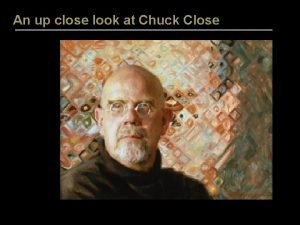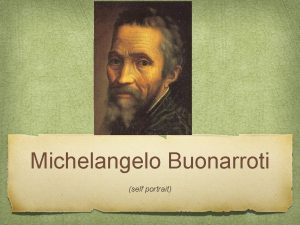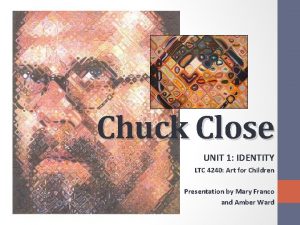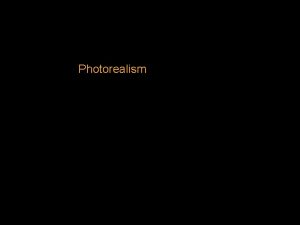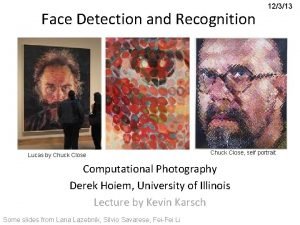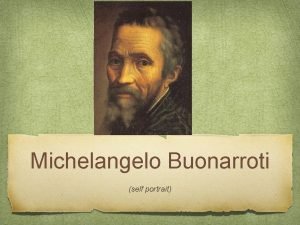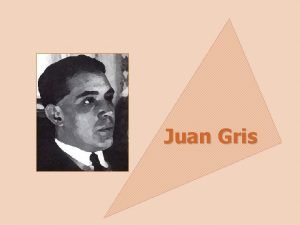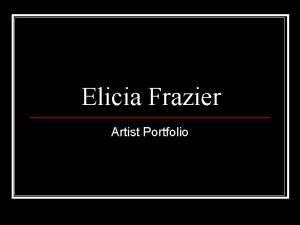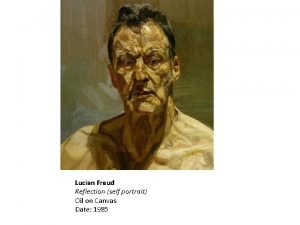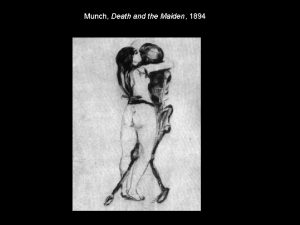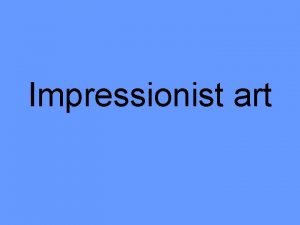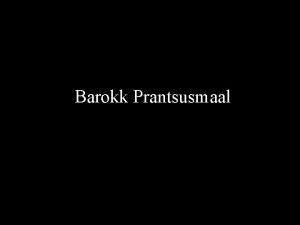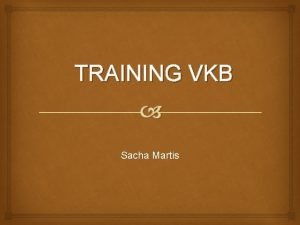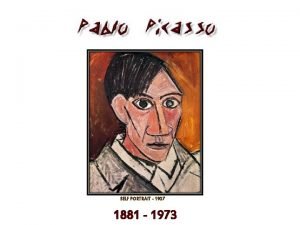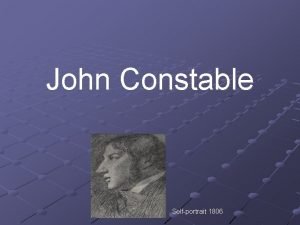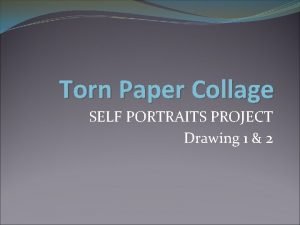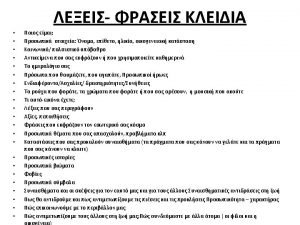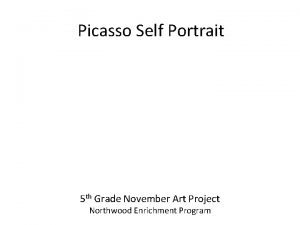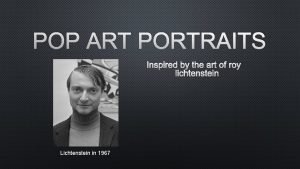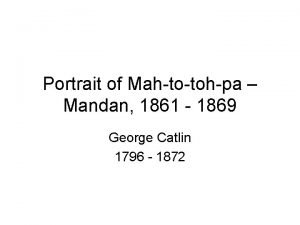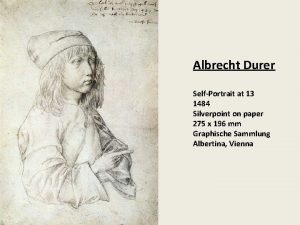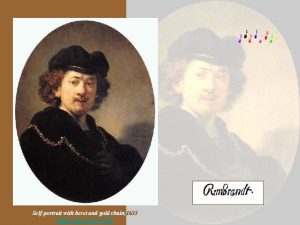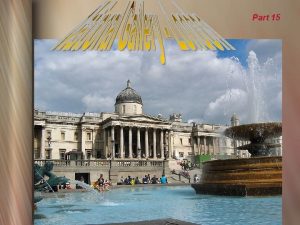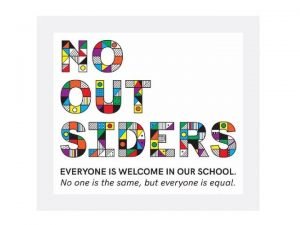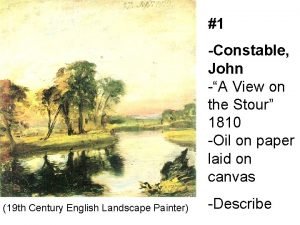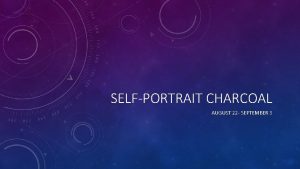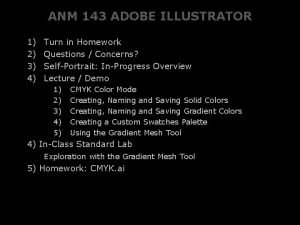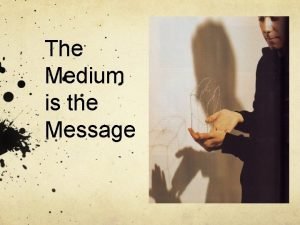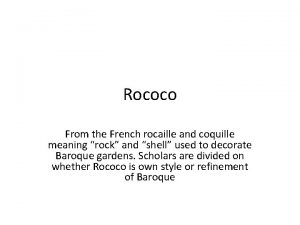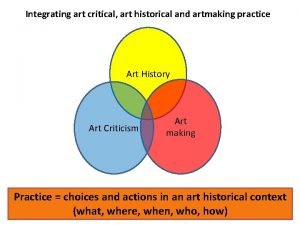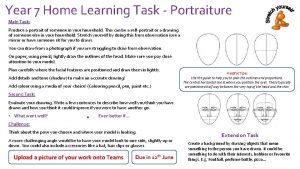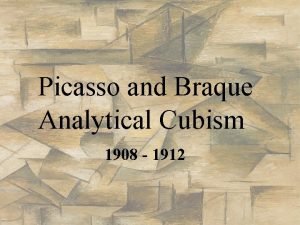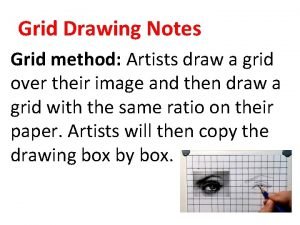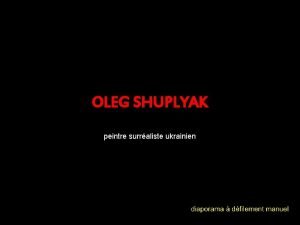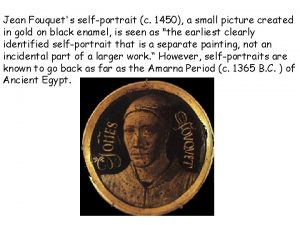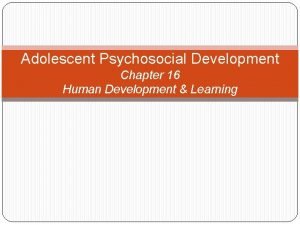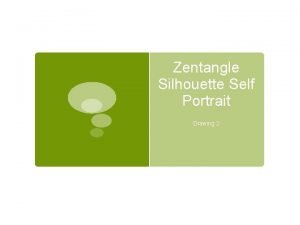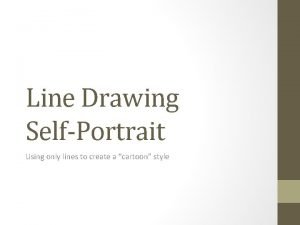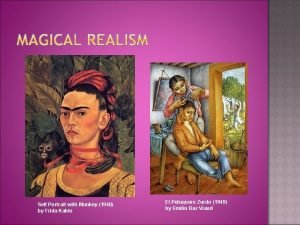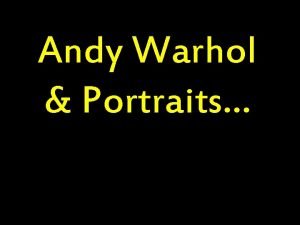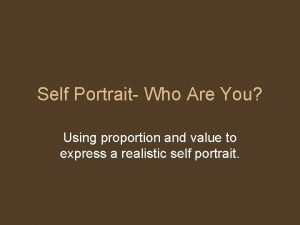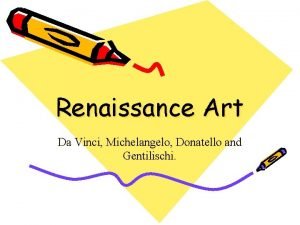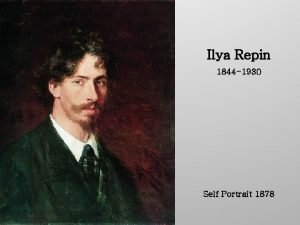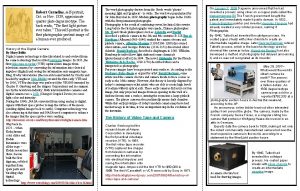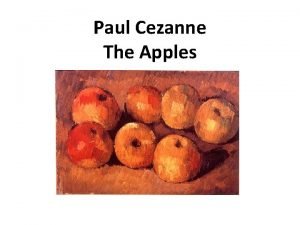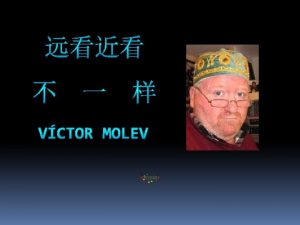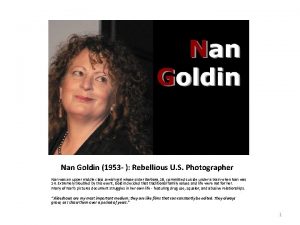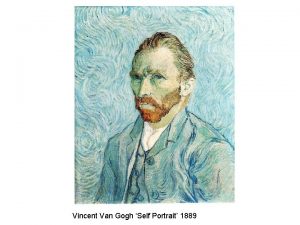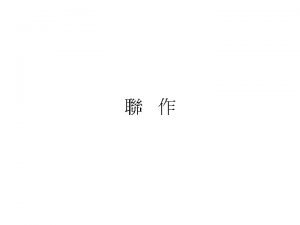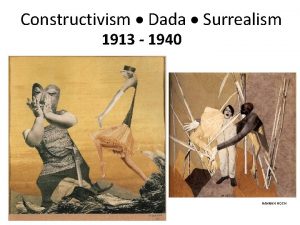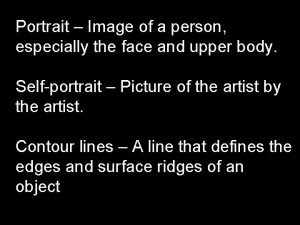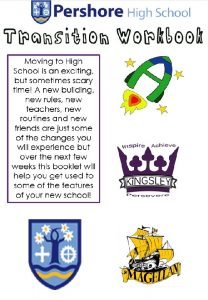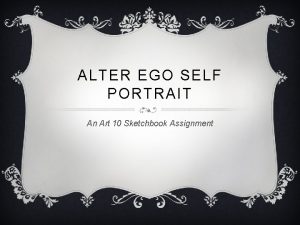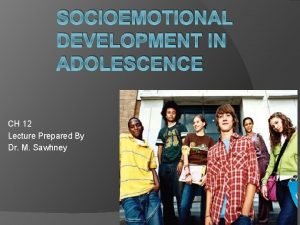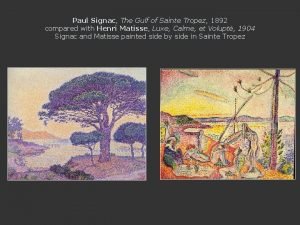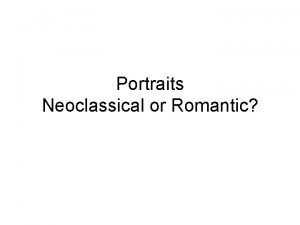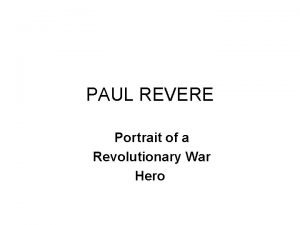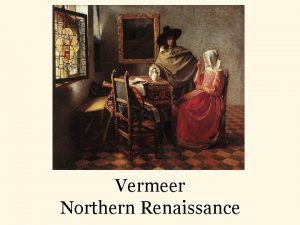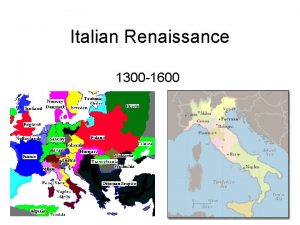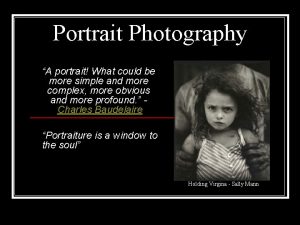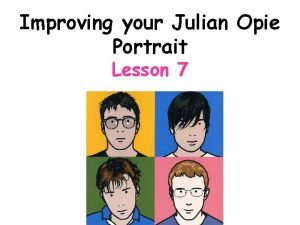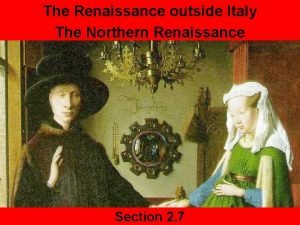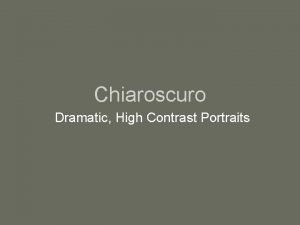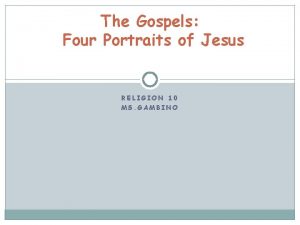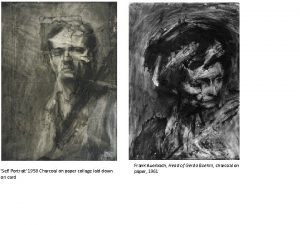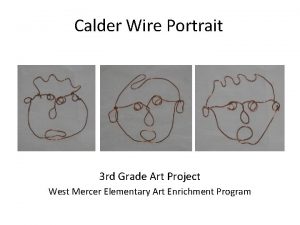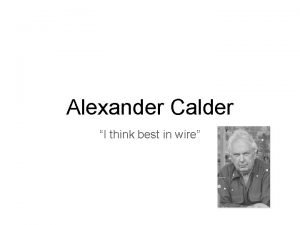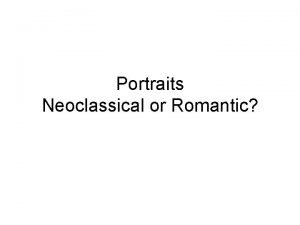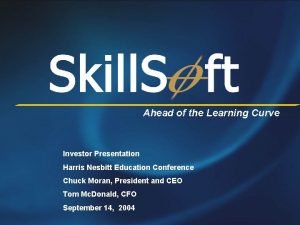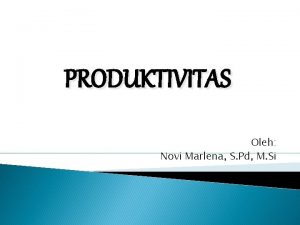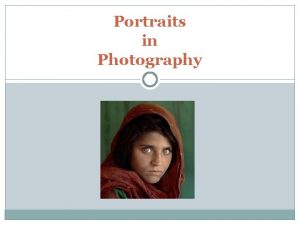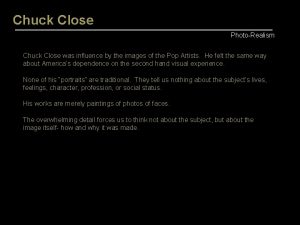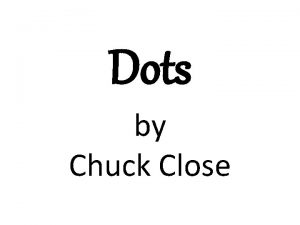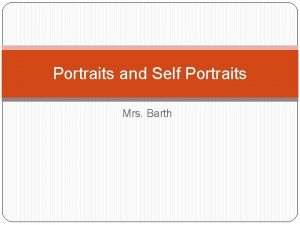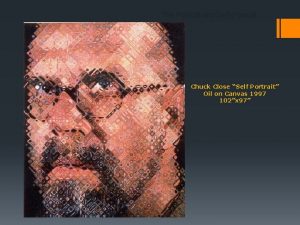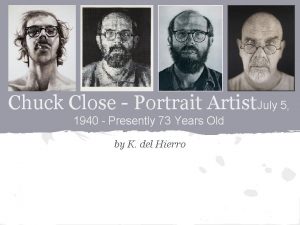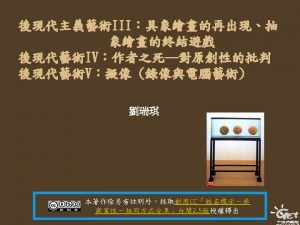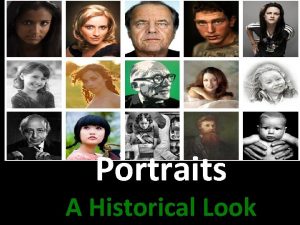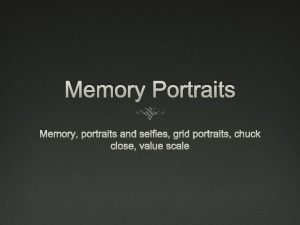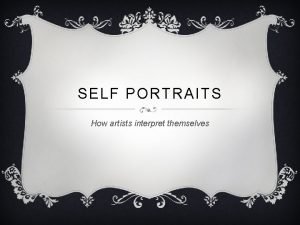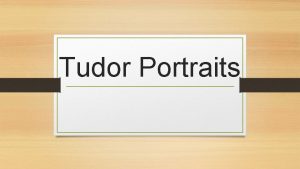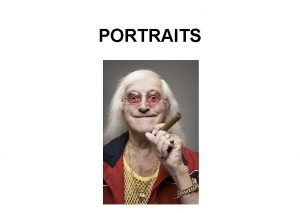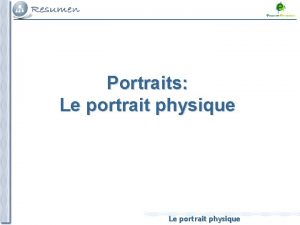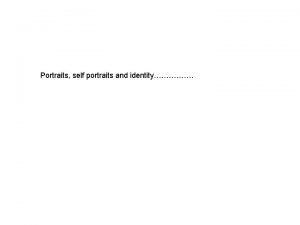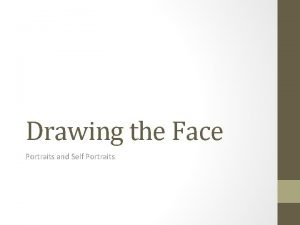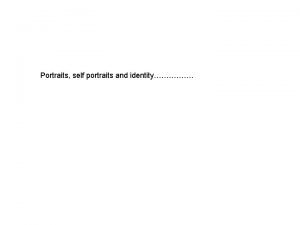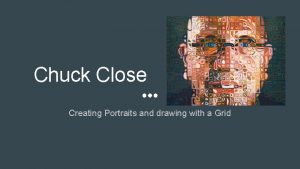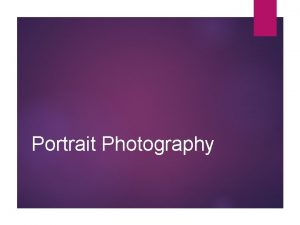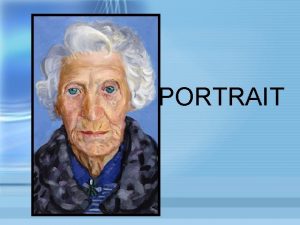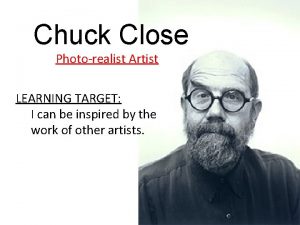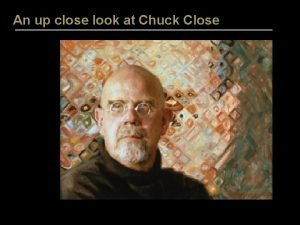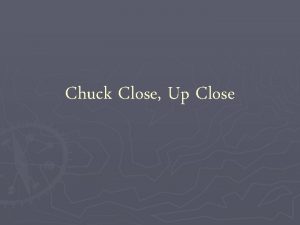Chuck Close Living artist Photorealism Portraits Self Portrait



















































































- Slides: 83

Chuck Close • Living artist • Photo-realism • Portraits Self Portrait 1997, Oil on canvas

Photo-Realism Hotel Empire, Richard Estes

Chuck Close and Photo-Realism • Large scale portraits • Family and friends • Uses Graphs to enlarge Photographs • Six figure paintings Frank. 1969 Oil on canvas 108 x 84”

Early Works Phil. 1969 Acrylic on canvas, 108 x 84"


Phil Watercolor. 1977, Watercolor on paper 58 x 40"

Big Self-Portrait. 1967 -68. Acrylic on canvas. 107 1/2 x 83 1/2"

Linda. 1975 -76. Acrylic and pencil on canvas. 108 x 84"

Fanny / Finger-painting (detail at left). 1985. Oil-based ink on canvas. 102 x 84"

Jud / Collage. 1982. Pulp paper collage on canvas. 96 x 72"

Leslie/Watercolor 1. 1986. Watercolor on paper 30. 25 x 22. 25”

“When every kid on the block wanted to become a policeman or fireman, I wanted to be an artist. It was the first thing I was good at, the first thing that really made me special. I had skills the other kids didn’t have. Art saved my life. ”

An Obstacle • 1988 health problems • Hospitalization • Paralysis

Chuck Close Photo-Realism In 1988 Chuck Close was hospitalized due to the sudden collapse of a spinal artery. He has since been paralyzed from the waist down. He continues to paint on the same scale that he had always painted on. Now he has attendants that help him with the preliminary work, but he still does the actual painting. Sometimes he sits on a forklift, and other times he uses a special mechanical easel that raises, lowers, and rotates his canvases for him.


Overcoming All • New studio • New techniques • New style


“ I had to recover enough to paint. There is nothing else I can do. There is nothing else I want to do” Chuck Close

The Studio • When I was walking around I was 6 foot 3, and people didn't tend to approach me very much, and one of the interesting things about being in a wheelchair is it sort of cuts you down to size and perhaps out of sympathy or whatever people feel much more like coming up to you. I'm more accessible I guess down here. ”


Chuck Close Photo-Realism Chuck Close was influence by the images of the Pop Artists. He felt the same way about America’s dependence on the second hand visual experience. None of his “portraits” are traditional. They tell us nothing about the subject’s lives, feelings, character, profession, or social status. His works are merely paintings of photos of faces. The overwhelming detail forces us to think not about the subject, but about the image itself- how and why it was made.

Alex II. 1989. Oil on canvas. 36 x 30"

Roy II, 1994. Oil on canvas, 102 x 84”

Kiki, 1968. Acrylic on canvas. 107 1/2 x 83 ½”

“There’s a real joy in putting these little marks together. They may look like hotdogs, but with them I build a painting. ” Chuck Close Elizabeth, 1989. Oil on canvas, 72 x 60”

Judy, 1989 -90. Oil on canvas. 72 x 60”

Chuck Close Self-portrait. 1996. Oil on canvas

Chuck Close Photo-Realism He magnified every blemish and imperfection. His early work was created using an airbrush, as to mimic the mechanical quality of a photograph. The process of creating the painting was equally important to Chuck Close as the finished image. Leslie. 1973

C H U C K C L O S E Chuck CLose

Chuck Close Photo-Realism “I paint heads because heads matter to everybody. If you paint a face big enough, it’s hard to ignore. ” “My real subjects are not people, I paint portraits of photographs” “If you make something new and personal, it may not look like art at all. ” Self Portrait. 1991 Self Portrait 1991

C H U C K Alex 1987 C L O S E Alex 1987

April 1991

Chuck Close Photo-Realism Uses a grid to enlarge the photos onto the canvas. Frontal head posed in almost a passport-photo view Unsmiling lips and dead-pan eyes. Used several different media to create his portraits: Airbrush, Fingerprints, Crayon, Acrylic Paint, Oil Paint, Pencil, Pen, Paper Collage, Keith

C H U C K Cindy 1988 C L O S E Cindy 1988

C H U C K C L O S E Elizabeth 1989

C H U C K Eric (in progress) Eric (In Progress) C L O S E

What other artist have we discussed was concerned for the purity of color What style of art did he work in

Roy II Roy ll




Self portraits



Chuck Close

Questions 1. Why do you think Chuck Close painted portraits? 2. How has his disability impacted his artwork? Does it make it better? 3. Describe Chuck Close’s artwork in 5 words.

Lucas 1991

C H U C K C L O S E Joel 1993

Mark (1978 - 1979), acrylic on canvas. Metropolitan Museum of Art, New York. Detail at right of eye. Mark, a painting that took Close fourteen months to complete, was constructed from a series of airbrushed layers that imitated CMYK color printing. .

Lucas (1986 - 1987), acrylic on canvas. Metropolitan Museum of Art, New York, . Detail at right of eye. The pencil grid and thin undercoat of blue is visible beneath the splotchy "pixels. " The painting's subject is fellow artist Lucas Samaras.




“I discovered about 150 dots is the minimum number of dots to make a specific recognizable person. You can make something that looks like a head, with fewer dots, but you won't be able to give much information about who it is. ”





Art 1 • Objectives: Students will. • 1. Show an understanding and awareness of the work of Chuck Close. Understand how an artist gets ideas. • 2. Use ruler skills in creating a grid - develop skills in enlarging a composition using a grid. Study proportion. • 3. Recognize values and create values using line, pattern and simulated textures. Develop Contrast through values.





Art 2 • Objectives: Students will. • 1. Show an understanding and awareness of the work of Chuck Close. Understand how an artist gets ideas. • 2. Use ruler skills in creating a grid - develop skills in enlarging a composition using a grid. Study proportion. • 3. Recognize values and create values using line, pattern and simulated textures. Develop Contrast through values. • Students will translate value into color in the creation of a portrait (or image) in the style of Chuck Close. • Students will enlarge an image using a grid (math correlation)

Forsyth Country Day School Teacher: Rebecca Stone-Danahy Emily Branch; 4 GKs; Portfolio, Art, Grade 12





South Central High School Teacher: Ira Varney, Grade 10 Kaitlyn Worrell, Self-Portrait, Painting, American Vision Nominee

Sanderson High School Teacher: Jeannette Stevenson, Grade 12 India Cox; You Know, the Girl with the Squares, Painting












 Chuck close self portrait 1997
Chuck close self portrait 1997 Us painter
Us painter Who is the artist of self portrait
Who is the artist of self portrait Chuck close
Chuck close Duane hanson tourists 1970
Duane hanson tourists 1970 Lucas chuck close
Lucas chuck close Chuck close youtube
Chuck close youtube Self portrait michelangelo
Self portrait michelangelo Portrait of josette gris
Portrait of josette gris Portrait artist portfolio
Portrait artist portfolio Examples of actual self
Examples of actual self Lucian freud reflection (self-portrait)
Lucian freud reflection (self-portrait) George grosz gray day
George grosz gray day Elbow impressionism
Elbow impressionism Nicolas poussin self portrait
Nicolas poussin self portrait Zinaida serebriakova self portrait
Zinaida serebriakova self portrait The old fisherman picasso
The old fisherman picasso John constable self portrait
John constable self portrait Tear art self portrait
Tear art self portrait 크리스티앙 볼탕스키
크리스티앙 볼탕스키 Picasso cubism self portrait
Picasso cubism self portrait Pop art self portrait
Pop art self portrait George catlin self portrait
George catlin self portrait Durer self portrait 1484
Durer self portrait 1484 Bushy hair
Bushy hair Corso toeic bassano
Corso toeic bassano How to draw ears on a self portrait
How to draw ears on a self portrait Paris, a rainy day
Paris, a rainy day Charcoal self portrait
Charcoal self portrait Adobe illustrator self portrait
Adobe illustrator self portrait Vik muniz toy soldier
Vik muniz toy soldier Elisabeth louise vigee le brun self portrait 1790
Elisabeth louise vigee le brun self portrait 1790 Durer self portrait
Durer self portrait Kieran hall self portrait
Kieran hall self portrait Learning task 2 look for a health product at home
Learning task 2 look for a health product at home Cubism characteristics
Cubism characteristics Grid drawing rubric
Grid drawing rubric Oleg shuplyak self portrait
Oleg shuplyak self portrait Jean fouquet self portrait
Jean fouquet self portrait Is a self-portrait composed of many pieces
Is a self-portrait composed of many pieces Zentangle self portrait
Zentangle self portrait Line self portrait
Line self portrait Impressionist self portrait
Impressionist self portrait Self portrait with monkey
Self portrait with monkey Photos2print
Photos2print Portrait proportion
Portrait proportion Michelangelo vs da vinci
Michelangelo vs da vinci Barge haulers on the volga
Barge haulers on the volga Robert cornelius self portrait 1839
Robert cornelius self portrait 1839 ________ is a self-portrait composed of many pieces.
________ is a self-portrait composed of many pieces. Self portrait with apple
Self portrait with apple Victor molev
Victor molev Self-portrait with eyes turned inward, boston
Self-portrait with eyes turned inward, boston Rousseau self portrait
Rousseau self portrait Self portrait
Self portrait Picasso self portrait
Picasso self portrait Andy warhol campbell soup
Andy warhol campbell soup Hannah hoch self portrait
Hannah hoch self portrait Mc escher self portrait
Mc escher self portrait Self portrait
Self portrait Gustave courbet self portrait
Gustave courbet self portrait Alter ego self portrait
Alter ego self portrait Self portrait composed of many pieces
Self portrait composed of many pieces Paul signac self portrait
Paul signac self portrait Neoclassicism portraits
Neoclassicism portraits Portrait of paul revere
Portrait of paul revere Vermeer renaissance
Vermeer renaissance Northern renaissance portraits
Northern renaissance portraits Les types de portrait
Les types de portrait Julian opie portraits
Julian opie portraits Characteristics of the northern renaissance
Characteristics of the northern renaissance Dolcett
Dolcett 4 portraits of jesus
4 portraits of jesus Frank auerbach charcoal
Frank auerbach charcoal Calder wire portraits
Calder wire portraits Alexander calder wire portraits
Alexander calder wire portraits Neoclassical portraits
Neoclassical portraits Roy lichtenstein pop art portraits
Roy lichtenstein pop art portraits Living non living dead
Living non living dead Smallest living unit
Smallest living unit Venn diagram of living things and nonliving things
Venn diagram of living things and nonliving things Shell living or nonliving
Shell living or nonliving Chuck moran skillsoft
Chuck moran skillsoft Contoh soal produktivitas multifaktor
Contoh soal produktivitas multifaktor

